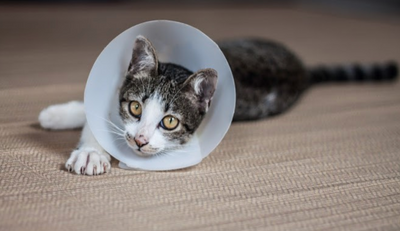Any cat owner can sympathize with the fear people feel as they take their cat home from the vet with a new prescription. Cats are not known to be patient and cooperative animals, and delivering medicine to your cat can be stressful for both of you. Learn how a compounding pharmacy can help.
Traditional Medication Directions
Wrapping a pill in a desirable food product does not fool most cats. Pill pockets, a treat made with slot to hold medication, also rarely trick felines. Some cats may consume the pill with the food, but most will eat the treat and leave the medication behind.
A hands-on method is to wrap the cat in a blanket or towel and gently squeeze the sides of the cat's jaw to force open the mouth. The owner then tosses the pill (or pours the liquid) onto the center of the back of the tongue and closes the cat's mouth.
The method has a few drawbacks. First, it usually requires at least two people to carry out the task effectively. Most cats will recognize the towel after the first dose and run off the next time. Also, the owner still has the risk of a cat bite as they administer the medication. The whole event is also an unpleasant experience for the cat.
Adaptable Compounding Solution
Compounding pharmacies can transform the medication into something that appeals to the pet. The medication can become a liquid in a flavor the cat will enjoy, like tuna or chicken. You could mix the liquid into water or milk if the cat will not drink the medication directly. Either way, the animal gets the help they need, and the owner is free from guilt.
Another possibility is a topical solution. Compound pharmacists can make an ointment or gel for the pet from their oral medication. The owner rubs the gel directly onto the skin where it absorbs into the bloodstream. Any medication left behind is safe for them to consume during a grooming session.
Topical solutions may work better than a flavored liquid in a multi-cat household. It is difficult to know if the pet that needs the medication was the one that consumed it if they will not drink it all while the owner watches. It is also not always easy for the owner to fight off other interested cats when a medication smells like fish or poultry.
An Elizabethan collar (also known as the cone of shame), can help if the topical solution needs to stay on the skin rather than instantly ingested. Unlike daily doses of medicine, the collar only needs to go on once and stays on through the medication cycle.
Custom Dosing Options
Most pharmacies offer prescriptions in specific doses and forms. The options may not meet the needs of all patients, and this can force a pet owner to try to cut pills to prevent an overdose. Compounding pharmacists offer a seemingly endless set of options.
Finicky cats may like a certain flavor one day but prefer something different the next time they need their medication. Small batches of a prescription in several assorted flavors could work to keep the interest of the cat. Many compounding services even offer unusual (but pet-safe) flavors like chocolate or fruit.
Compounding pharmacies can adjust for weight or special needs for a cat that is too small or too old and frail for a traditional dose of medicine. The pharmacist can often even work around allergies, or certain health conditions to ensure the pet gets what it needs with fewer potential side effects.
At Camelback Compounding Pharmacy, we know that owners worry when their pets are unwell, and we want to help your pet feel better as soon as possible. If your pet is not taking their medication as directed and you are worried about their health, contact us. We will do all we can to give you and your cat a more agreeable solution.

